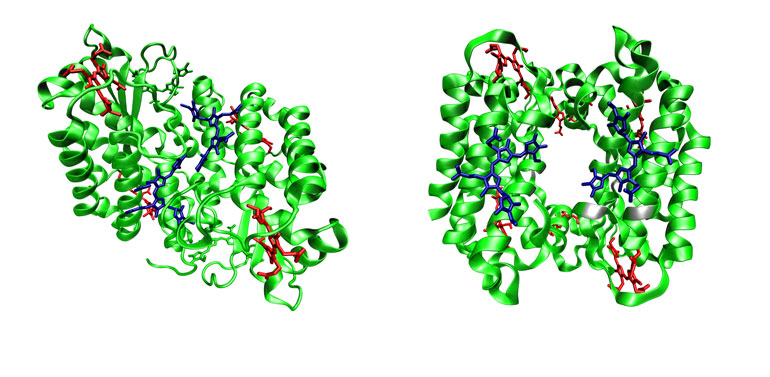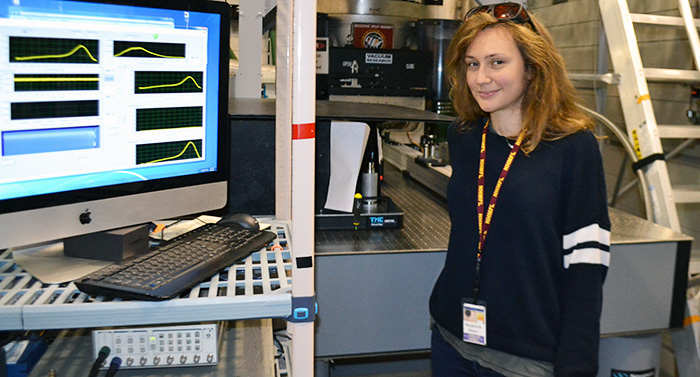Who is the scientist?
Margherita Maiuri is a postdoctoral researcher at Princeton University, where she works in the group of Greg Scholes. A native of Naples, Italy, Maiuri and her colleagues study how complex molecular systems in chemistry and biology interact with light. This is Maiuri’s third trip to the MagLab.
What is she putting in the magnet?
Short answer: Algae.
Longer answer: Maiuri put two types of proteins containing specific chromophores — the sunlight-absorbing molecule responsible for initiating photosynthesis — in the 25 tesla split magnet in the lab’s DC Field Facility. Not only did she expose these molecules to a high magnetic field; Maiuri also shot them with ultra short laser pulses that simulated sunlight. She was able to implement both techniques at the same time thanks to the unique design of the split magnet, which features holes smack in the middle of its coils precisely so that scientists can expose their specimens to lasers during optical spectroscopy and other experiments.
Why do I care?
For billions of years, nature has been fine-tuning photosynthesis. Maiuri wants to better understand how plants harvest and store the sun’s energy, and are even examining this question at the quantum level. While many laypeople have heard of quantum physics, fewer are aware of the growing field of quantum biology, which focuses on quantum phenomena within biological systems. In this case, scientists want to better understand how molecules in complex systems interact with each other and share the absorbed energy while harvesting light at the nanoscale level. By adding a high magnetic field to this experiment, Maiuri is trying to isolate the quantum effect they are looking for.
By studying light-harvesting and energy-transfer techniques already eons in the making, these scientists hope to learn some of Mother Nature’s tricks and contribute to the development of artificial photosynthesis.
"The algae that we are studying are evolutionarily organisms closely related to plants, and we hope that a deep understanding at the quantum-mechanical level will help us to appreciate this process," said Maiuri. "The idea is to use other types of molecules that may be similar to the ones in nature and try to reproduce a similar effect."
Story and photos by Kristen Coyne, Illustrations courtesy of Marghertia Maiuri






